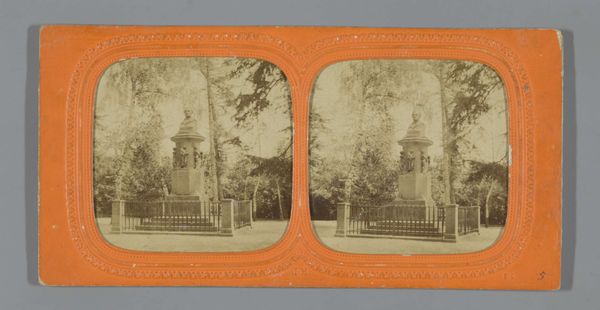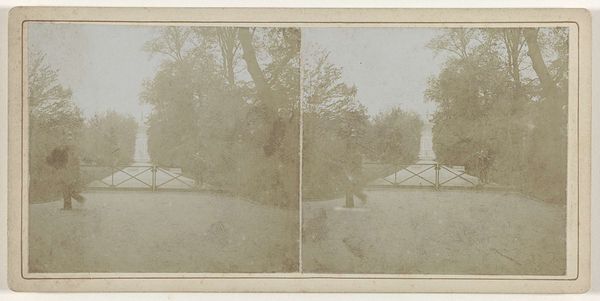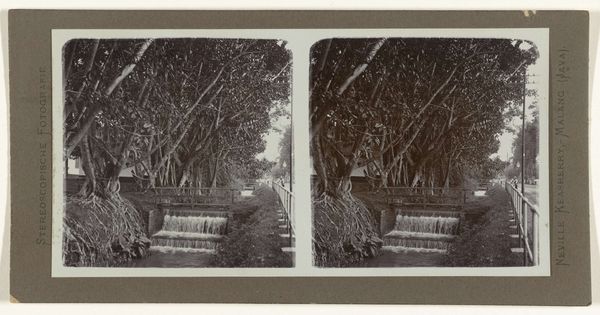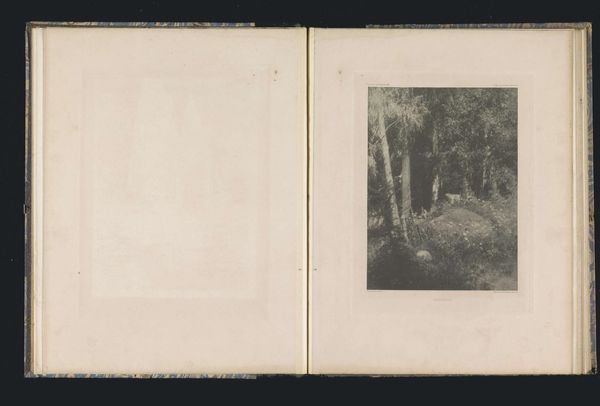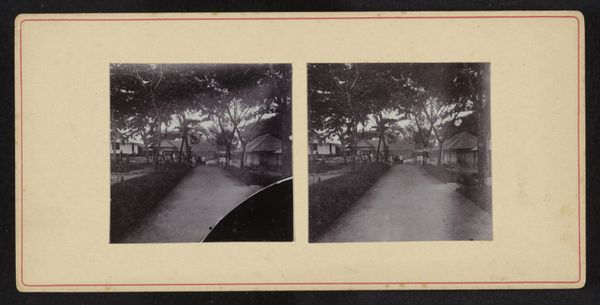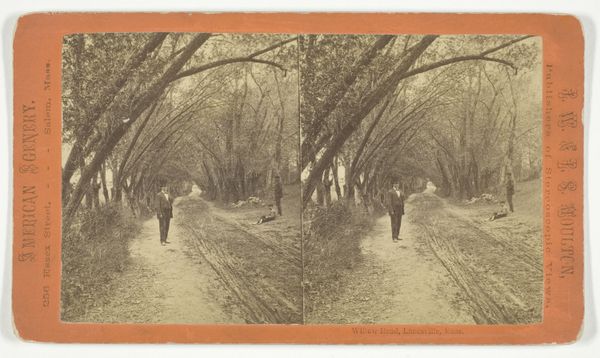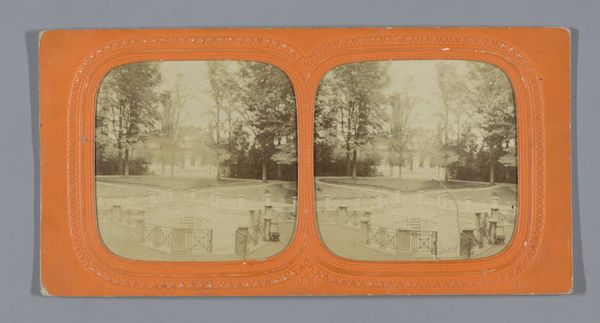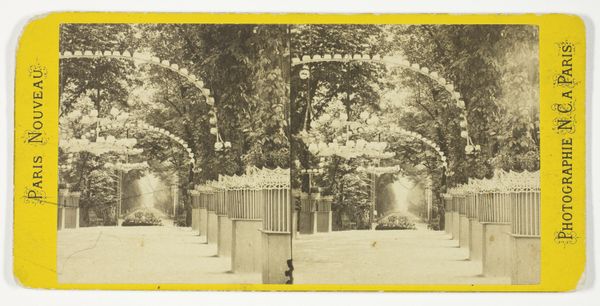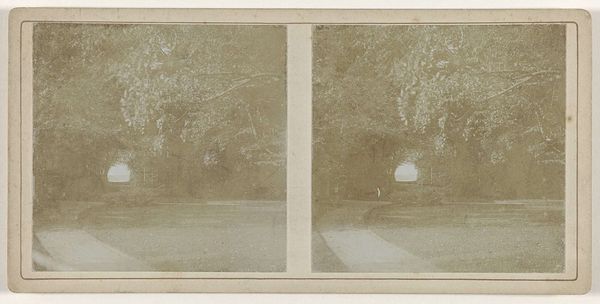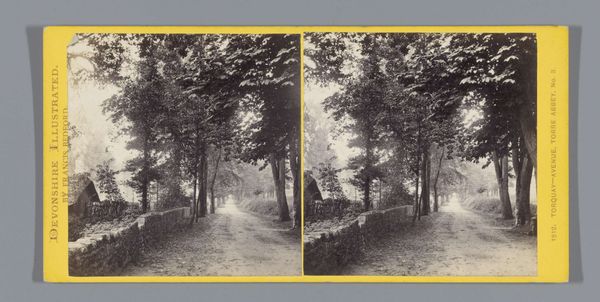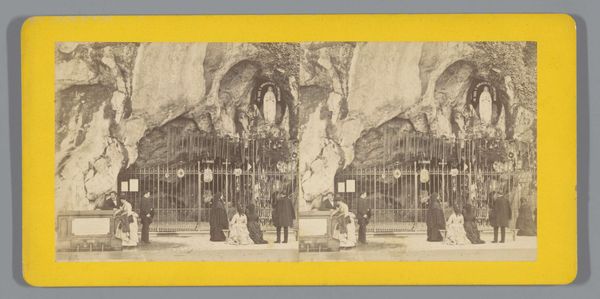
Dimensions: height 87 mm, width 169 mm
Copyright: Rijks Museum: Open Domain
Curator: Ah, this image evokes such a wistful, sepia-toned dream. It makes me feel as if I've stumbled upon a hidden garden in a forgotten novel. What’s our context here? Editor: This is "Brug in het Parc Monceau, Parijs," or "Bridge in Parc Monceau, Paris," by Charles Dauvois, dating from around 1863 to 1875. Dauvois employed the albumen print method, quite popular for capturing landscapes at the time. Curator: Albumen prints! So meticulously crafted... The texture feels like old lace, wouldn’t you say? All those delicate gray hues just breathe elegance, but with a melancholy air. It's like a stage set for a very quiet drama. Editor: Precisely. The photograph captures the park in its manufactured Romanticism. Parc Monceau was designed as a landscape of illusions and artificial ruins, appealing to the bourgeoisie seeking respite and picturesque scenes within the growing city. It reflects a cultivated escape. Curator: Ah, an escape! That's it. It feels staged, yes, but that almost adds to the charm, doesn't it? The little staircase to nowhere, framed by the trees. Is it going anywhere at all? Editor: That "nowhere," I believe, is key. Parks like Monceau offered the rising middle class curated spaces to contemplate nature but more so, to see and be seen. The photograph, sold as a souvenir, then reinforces their aspirational identities tied to the leisure offered by urbanity. Curator: So this photograph isn’t just *of* a park but *about* access, experience, status? That transforms it into something so much richer and thornier, doesn't it? No simple, lovely little daguerreotype, then! Editor: I believe it provides a valuable record of both Parisian urban development and how new imaging technologies such as photography shaped class perceptions, aesthetic tastes, and experiences of public space. Curator: Well, you’ve certainly shattered my pretty illusion, in the most fascinating way! Now, I see not just a wistful dreamscape, but a social document lurking within the silver. Amazing how one's gaze changes with a bit of historical prodding. Editor: Indeed, viewing photographs critically helps us unravel social threads hidden within even the most idyllic scenes. A romantic stroll is never just a romantic stroll, is it?
Comments
No comments
Be the first to comment and join the conversation on the ultimate creative platform.

